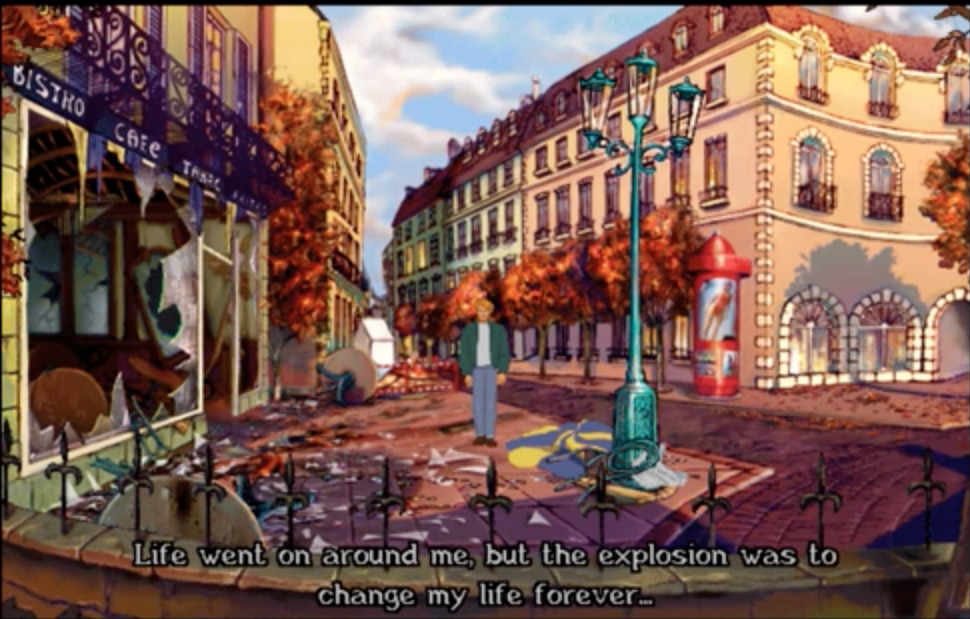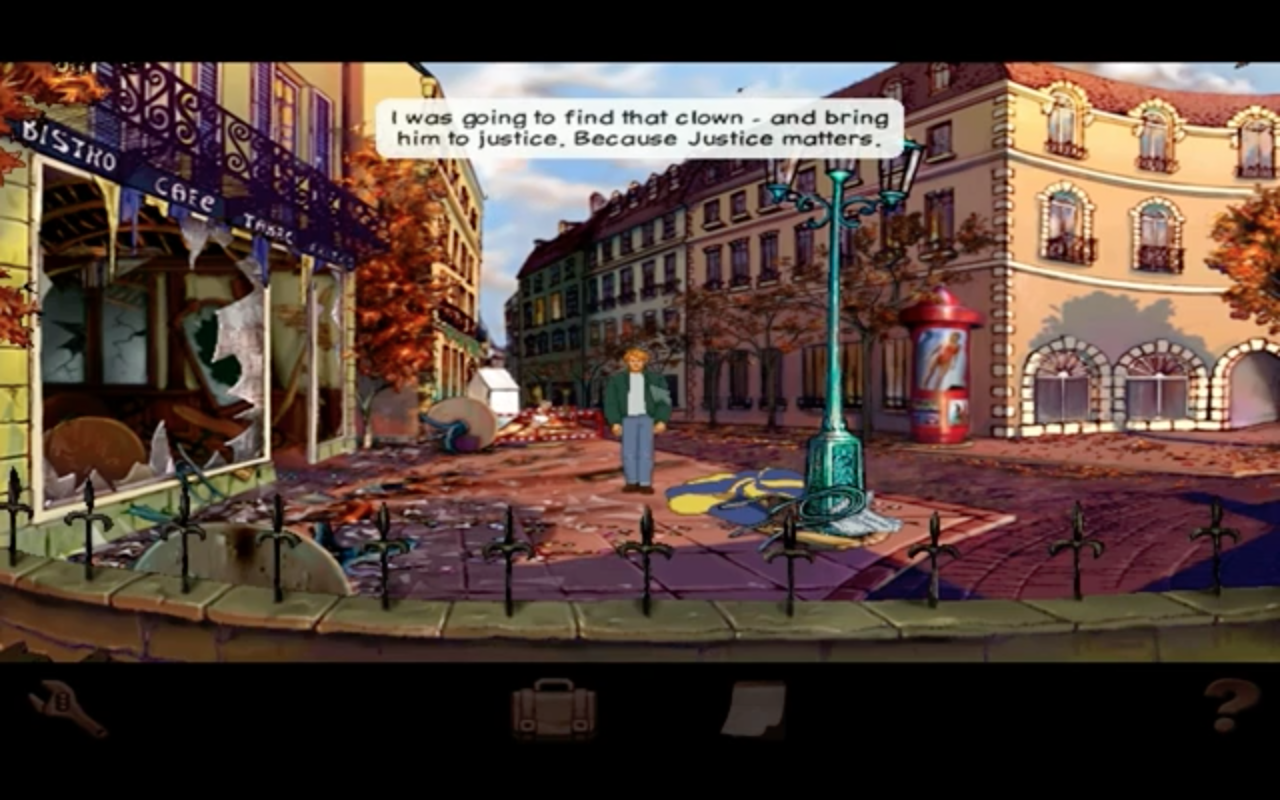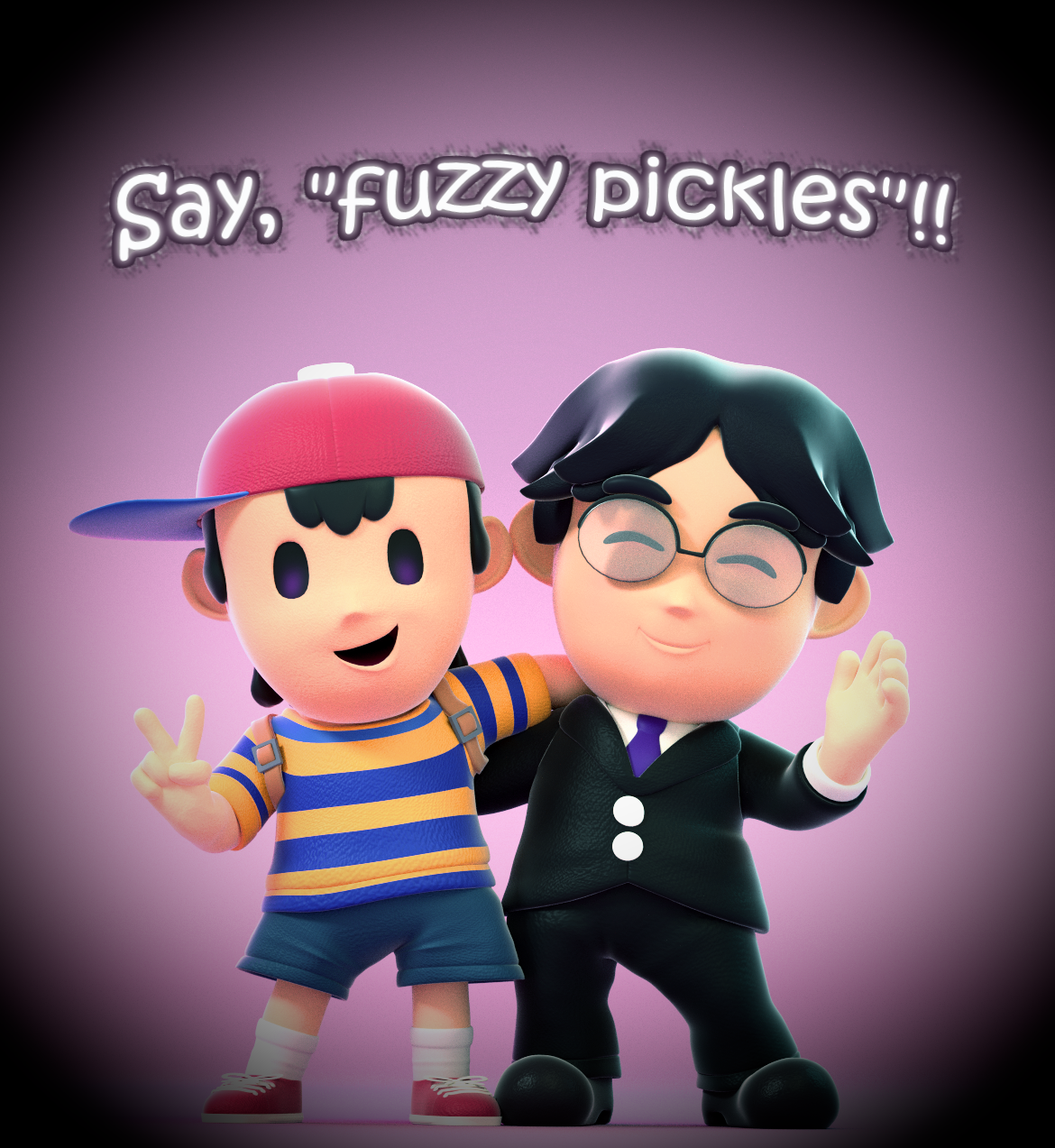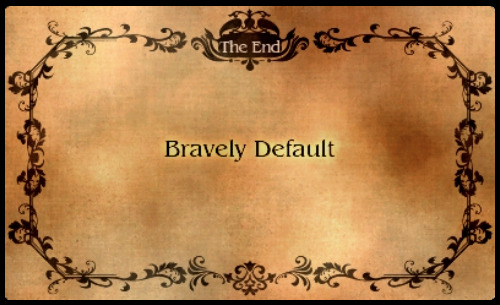Yoshiyuki Tomino’s most recent TV series from 2014, Gundam: Recongustia in G (Gandamu G no Rekongisuta) or more popularly shorthanded to G-Reco, was met with critical and fan disdain, and while sales were somewhat favorable for the series on a whole, it was so quickly hated by most that even bringing it up in any positive light would get you insulted. Heck even grumpy old Tomino eventually apologized for it and said he wasn’t pleased with the end result, himself. I originally didn’t want to talk about G-Reco because of this overwhelming negatively involved with the series; really, who would want to talk about something that will just get you hate-mail? But after a very fun rewatch of Tomino’s 1999 Turn A Gundam, I decided to overturn that decision of mine, and finally write down some reflections on G-Reco.
The initial announcement of G-Reco in 2011 was a very exciting one for me, personally. Tomino casually revealed that he was working on a new sci-fi series, set very far off in the future and involved orbital elevators. “The ‘G’ will be the future of the Universal Century.” “The ‘G’ stands for gravity.” “The ‘G’ will be unlike anything else.” So much mystery and excitement was there for so little clear information, at this time it wasn’t even established if this series was an actual Gundam series, or something else entirely all on its own. The original teaser image of what was either a super slim mecha (beckoning back to Tomino’s 1993 Victory Gundam where as time progressed, the mechas became slimmer and shorter, and more easily maneuverable and easier to mass produce), or a man in a spacesuit, and it was standing on top of an orbital elevator.
It was hard to tell much at that time, but Kenichi Yoshida was involved in the project as a character designer and had been on board since 2009 when Tomino initially approached him. I always liked Yoshida’s art and he had previously worked with Tomino on the critically panned but cult favorite Overman King Gainer, which won over the fans it did have with its strange otherworldly designs, bright and colorful characters and world, and but of course, Tomino’s general strangeness and unique sense of tacky humor; by no means a classic, it was a perfectly likable series for a specific group of mecha fans. So while we didn’t have a lot of information about G-Reco yet, it was enough to get me rather excited, but looking back now, man, did we really know so little about G-Reco would be! And honestly, seeing Tomino’s recent track record of releases like the Mobile Suit Zeta Gundam A New Translation movie trilogy, where he, in my opinion at least, butchered his own previous acclaimed work very similarly to what George Lucas has often been accused of doing in the past decade, I probably should have geared my expectations lower.
Or maybe not. Tomino has always been an unique writer/director in that, while he is no doubt acclaimed for his huge hits of the past, and definitely has rightfully earned a claim to fame for helping pioneer the real robot subgenre and for bringing dark brutal TV shows to the masses decades before it was cool to do so, he’s also had awful, terrible, horrendous flops. For every Zeta Gundam Tomino has under his belt, there’s an equally bad creation like Garzey’s Wing. This, in my opinion, has always been the fun behind Tomino, though. You’re in for a ride no matter what he creates. Maybe it will be something incredible and blows you away with how imaginative and complex the world is, or maybe it’s an absolute mess and blows you away with how utterly ridiculous everything is and the general over-the-top insanity that fuels the characters in it. Either way I look at it, you’re in for a good time with Tomino, who will either give you a masterpiece, or a so-bad-it’s-good treat to snack on.
When finally unveiled proper at the 35th Anniversary Celebration of Gundam in 2014, G-Reco had gone through massive changes from what we knew earlier. Anything resembling the earlier teaser image was gone, and now the series had a much different looking mecha known as G-Self. Even the spacesuits were much different in the final series, so if it was a person in a suit all along, even that no longer resembled the series. This time Tomino told fans that the ‘G’ in the title stands for, of course, Gundam, but also stood for Ground, which Tomino said, was the much more important meaning. We finally learned that G-Reco, or at least this finalized version of it, is indeed a Gundam show, and we were finally given insight as to where ‘Reco’ came from in the earlier known title from the teaser image too—owing that to the finalized name “Recongustia in G” (Reconquista of the Ground/Taking back the Earth). For the large majority of people, this 2014 announcement was probably the first announcement of the series to them, and the reactions were pretty evenly mixed among the mecha fans. When the series’ premiered a mere 7 months later however, all of that changed, and for the worse, as the immediate response was largely negative after its first 2 episodes (G-Reco aired the first and second episode back-to-back) and only continued to be more and more panned by critics and fans in both Japan and the the rest of the globe, as it continued to run.
So really, what went wrong with G-Reco? I’ve been going on and on about how it was hated by most, and how Tomino even apologized for it, so I probably should talk about why people reacted this way. Well at the core of all of its problems lies the fact that it did nothing to help ease the viewers into the world. The show started right off the bat without properly explaining anything to anyone watching it, and very quickly the political plot lines became very hard to follow, as viewers had to ascertain for themselves the politics of the world they were watching, which honestly wasn’t easy as Tomino kept introducing an overwhelmingly large amount of complex fractions and alliances and betrays into his world, as well as very complicated terminology he had characters through out right and left. As the show went on, many felt all they could do was scream out in frustration, “Who is even on what side?!” “What is going on?!” “Why are these people even fighting each other?!!!”
Tomino didn’t really make any of this clear to anyone watching. On one hand, I gotta say, he was able to avoid the usual “plot dumps” or overly unnatural exposition that is often criticized in science-fiction works, but on the other hand, he did that by just outright ignoring it all together! Who even does something like that?! Actually, no, I take back my question. If someone were to do this, it would definitely be crazy grandpa Tomino, what am I even questioning here. G-Reco, isn’t really a too complicated plot either … well, once you are able to break down the world, its politics, its long list of terms and abbreviations, and its incredibly twisted and confusing web or character relationships, but doing so is not easy, especially on a first watch of the show. It is a sort of show that needs a complimentary compendium next to it to view. As I told a friend of mine, it’s an incredibly rich world, with fascinating histories ripe with politics, but you need some sort of book outside of the show itself to even understand a fraction of any of it. Overall, it’s a mess to untangle what’s going on in the show because of this, and it’s easy to see why a lot of people were turned off right away.
The other issues of the show like the short episode count for the series resulting in some awkward pacing at times, that there isn’t a single episode without fighting because you gotta sell them toys, the very powerful but never really explained Gundam the protagonist pilots, and the required knowledge of past Universal Century Gundam series to understand how anything works in G-Reco (don’t know about Minovsky particles? Tough luck figuring out what’s happening with the robots half the time), are all much easier to overlook in the long run for fans. Now, one of the more obvious and bigger defenses I’ve seen for the show and all its shortcomings is that its short 26 episode run, makes it one of, if not the, shortest Gundam show out there, and if it only had more episodes it would be better. However, it’s hard to say if that can rightfully excuse everything. I’m sure had it got a proper 50 episodes, or heck, even 39 episodes, it could have paced some of its events better, and maybe it might have even better explained and elaborated on certain things in the show, but even from the start, G-Reco seemed disinterested from explaining much of anything to its audience, and I feel like blaming the episode count isn’t really a “get out of free card” here, sorry to say. G-Reco is a flawed show, there’s no avoiding that, when a large majority of people can’t even understand what’s going on throughout most of its airing, this isn’t very good story telling. Especially since Tomino wasn’t trying to throw anyone for a loop, this isn’t a mystery, this isn’t on purpose—the confusion is all created by accident and unintentionally bad story telling.
So G-Reco definitely had problems … a lot of problems, but honestly … I loved every minute of it! There was a certain magic to G-Reco—how episodes were story-boarded and directed—that really made me feel like I was watching a long lost show from the 80’s or 90’s (except that it was somehow made in 16:9 widescreen). There’s something very familiar about how each and every frame of G-Reco is made that feels good to watch to anyone who has been longing to see something from that era now passed. It’s not the easiest thing to put into words, but the best I can say is that Tomino was able to make something that feels like a classic show, even though it’s not. For that alone I always found myself coming back to G-Reco, no matter how confusing it could be at times to follow. The old school sentimentalities on how to make an anime is pretty much all but dead nowadays, and as time moves on and on, and more old school animators continue to retire, it will definitely be lost altogether. In many regards that’s perfectly natural to happen as time continues on, but G-Reco made me feel like I was able to go back again to what things used to be like, even if just for a moment. I’m really happy that I was able to experience those old kinds of sentimentalities at least one more time.
Tomino’s wacky characters and general odd sense of humor was a blast for me, too. Honestly I say G-Reco has one of the best Char Clones ever made, I mean c’mon, his name is literally Mask! It’s not even Kamen (仮面) or anything else like that, it’s honest to God, Mask in English (Masuku - マスク)! Oh Tomino, you have made all your poorly named past characters proud yet again and kept the tradition strong (here’s looking at you, Asap). But seriously, not only is Mask’s name so doofy that I can’t help to love him, he’s also just a different kind of take on a Char Clone that hasn’t been done much in the past Gundam series. When the show starts Luin Lee (the man behind the Mask) is seen with the protagonist, Bellri, the two of them are from the same military academy and already have a relationship with each other. Then there’s the fact that Luin already had something to prove, always fighting a perpetual uphill battle, coming from the Kuntala clan, which in the series was looked down upon and faced much persecution.
Luin had to struggle to be accepted in both society and the military. He was a loser who had to work his way up to the top of the army (into his eventual Char Clone position), he wasn’t as naturally gifted as Bellri or didn’t luck into things like Bellri did (oh you protagonist, you, and how you always happen upon Gundams~). For once, the Char Clone had to prove himself, and had a complex about the protagonist, who lived a much easier life in comparison, and through Mask’s eyes at least, always got what he wanted without having to try much. It was Mask who always saw himself as Bellri’s rival, where as Bellri never even thought of him as one and didn’t care about that stuff. G-Reco puts the shoe on the other foot by making Mask much more hard working than Bellri, his protagonist counterpart. It’s a complete reversal the the original Amuro-Char relationship, and this time it is the Char Clone character that is the underdog, and not the protagonist of the show. And on top of all that, Mask had some of the hands down funniest moments in the show to boot. Seriously, it’s Tomino at his goofiest with this guy sometimes, and I just love it so much.
G-Reco was an estranged return to Gundam for Tomino, and with so many bumps on the road it’s hard to tell if the grumpy old man will come back and try his hand at something in the franchise again, or if anyone would even let him for that matter. And that’s not the only thing that’s hard to tell, it’s pretty hard to tell what Tomino was really trying to even do or say in G-Reco to begin with. There’s obviously some anti-war bent to the story, but that’s always been there for Gundam. The idea that Tomino was talking about an unprepared nation deciding to remilitarize once more after long periods of peace is also one that people like to bring up, and hey, given recent events; a topical and popular concept. Maybe it’s that those who are tied down by the chains of war and past cruelties will only find unhappiness and death, since Luin/Mask lived his whole life trying to prove he and his people deserved better only to become a power hungry war machine while the protagonist Bellri never even thought about those things and only wanted to live for the future. Or maybe it was just all satire that the modern Japanese are too soft, peace loving, and blind to all the war and terrible things going on in the world around them. Tomino himself said that for the first time in his Gundam career that he really wanted people to think about today's realistic problems, and so he threw in as many as he could think of that were affecting people. Really though, who even knows by this point, your guess is as good as mine, unraveling this mess isn’t easy in the slightest.
On many levels G-Reco is just a sloppy retread of Tomino’s much better made Turn A Gundam; Universal Century is a relic of the past, eons have passed since war was raged, technology has regressed on Earth, Earth has taboos surrounding technology and space travel, the Earth civilization is less advance than the civilization that lives in space and said space people wish to take back (reconquista) the Earth. The similarities go on and on and on, and very blatant Turn A Gundam fan service is provided and thrown into the flames. Even certain characters and names (Ameria, you don’t say?) are obviously meant to invoke nostalgia for Turn A. Many fans desperately hoped for something, anything, to bridge the two shows together and blow their minds. And yeah, that of course never really happened. We ended up titillation and that was about it.
Maybe Tomino just really likes characters like Lalah Sune, Loran Cehack, and Raraiya Monday, and that’s all there is to it. Maybe pretty multicolored lights make for nice effects, after all Overman King Gainer had a similar aesthetic going on with his powers, and Tomino thought it would be fun to tease that Moonlight Butterfly still exist in G-Reco. It’s hard to say, but at the end of the day it doesn’t change the quality of either show in question. Perhaps the best way to view this new revelation is to echo in one of the reactions posted to it. By creating a show after Turn A: the suppose end all of Gundam, Tomino has freed the series now. There is no end or no beginning anymore, and the creators of Gundam are free to do what they want, they are free from the chains of being just another show that will lead up to Turn A. We lose some of the coolness factor for Turn A in the process, which does make me somewhat sad, but now we no longer have to be concerned about the “end of Gundam”. The meta-series can move on and become anything it wants, not just another notch towards the eventual Turn A future of the series, it can go on to infinity.
At the end of the day, Tomino got to make his show, and whether or not he had to fight sponsors again and make compromises I don’t know, but he at least got to throw in some more things he always wanted to do, such as fleshing out the inner workings of his real robot science. As funny as it is Tomino’s “toilet in the cockpit of the mobile suit” was a practical addition and discussing how the spacesuits kept bodies warm even in the vacuum of … well … space, is also another welcomed small touch he brought in with G-Reco. Maybe, when you get down to it, G-Reco was just a vanity project, or better put, just something to keep the old man working and happy, which isn’t so bad. Besides it gave us all something to talk about again, which is what he wanted, whether or not it was good or bad, Tomino wanted to find a way to stay in our discussions, or so he seems to often say.
Was doing all that worth it? I don’t know. But we got to see some “Happy Tomino” in rare form, with great eye catches and scene transitions, his signature poses he likes to put people into, and the wacky song credits that you just can’t help but to love. Even the grump himself, Tomino, shows up in the final episode and lectures the main character! C’mon, how can you not get a sensible chuckle out of that. It’s a flawed show, in fact, it borders on the pretty bad at times, but I loved the heck out of it, and am glad Tomino got to play around with the director’s seat at least once more. For all its story problems G-Reco had, Tomino has not lost a single of his talent directing. The kind of shots, scene transitions, and especially the fight cartography, is some of the best in years for the TV Gundam shows, and a lot more artful than really a toy commercial may deserve.
G-Reco wasn’t exactly the show we all wanted, but next time I’m going to present arguably Tomino’s magnus opus, Turn A Gundam. So look forward to next time, and see you then.

































